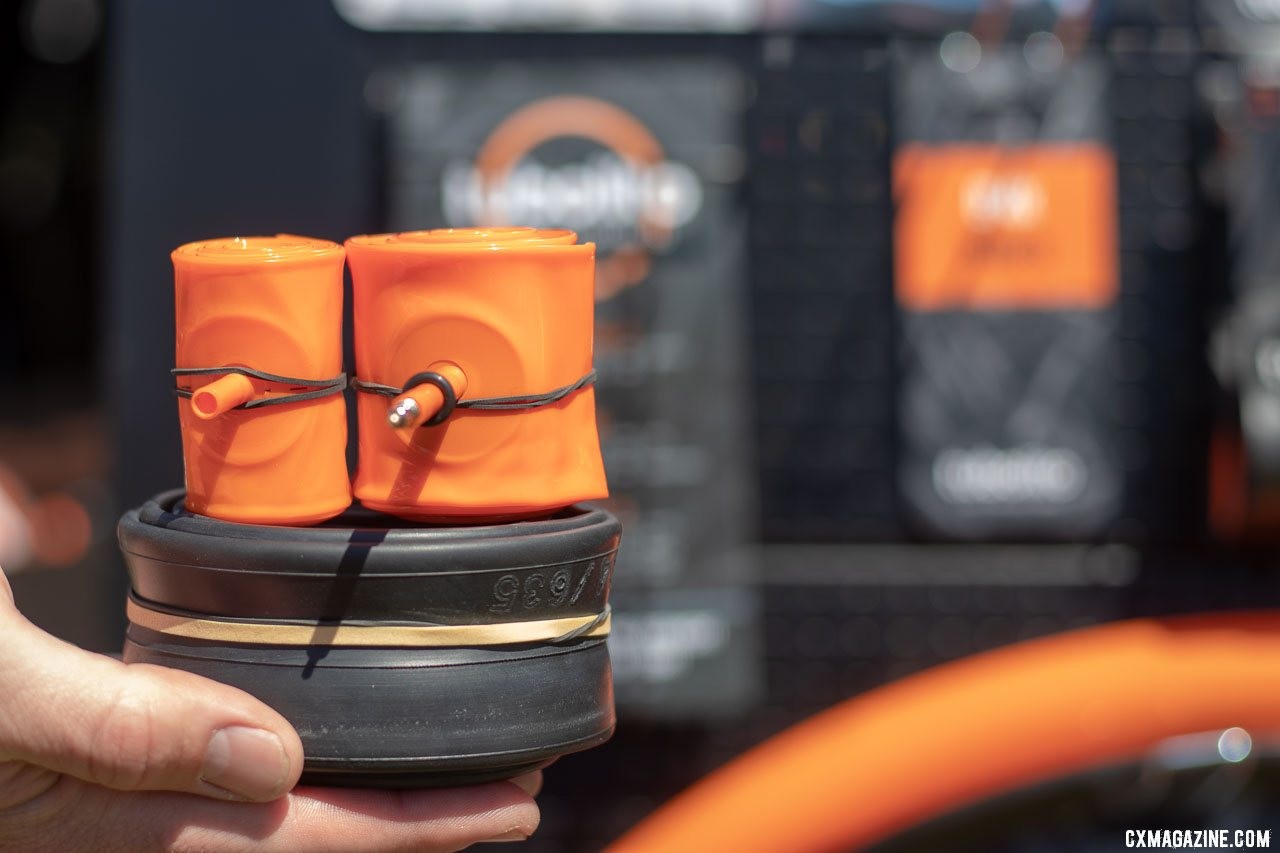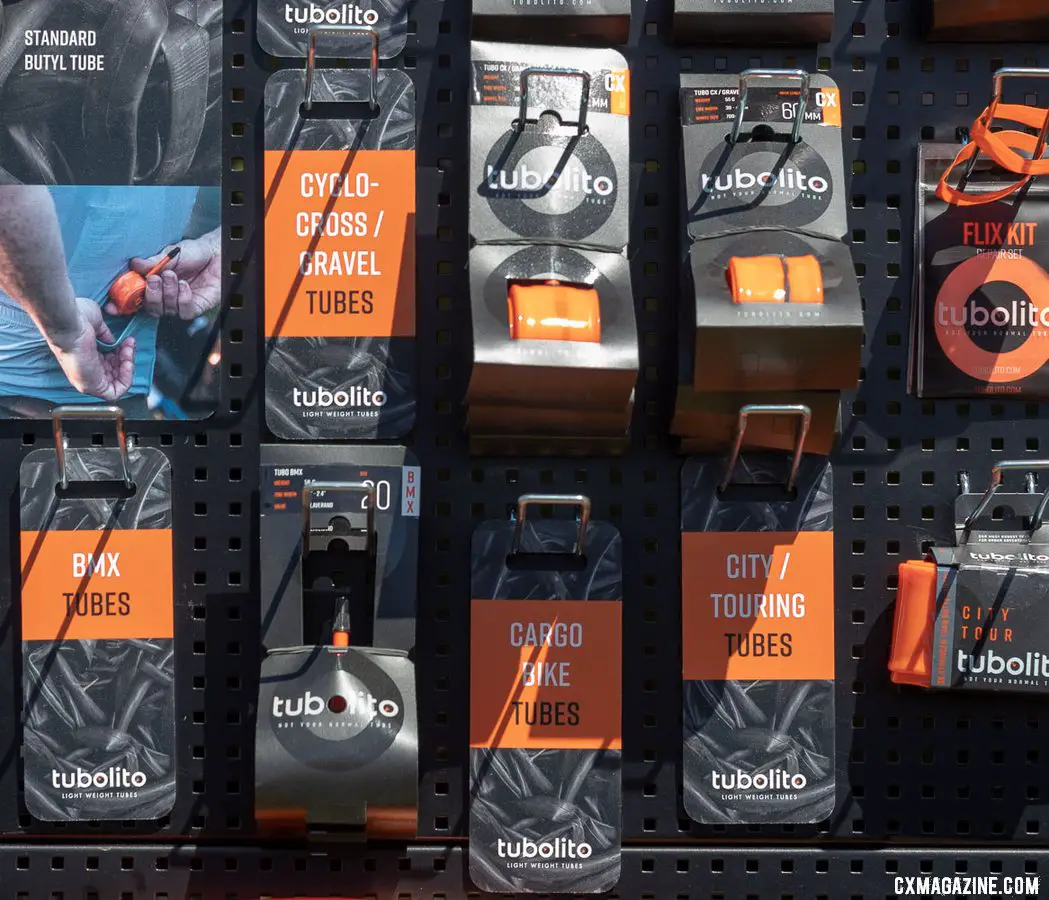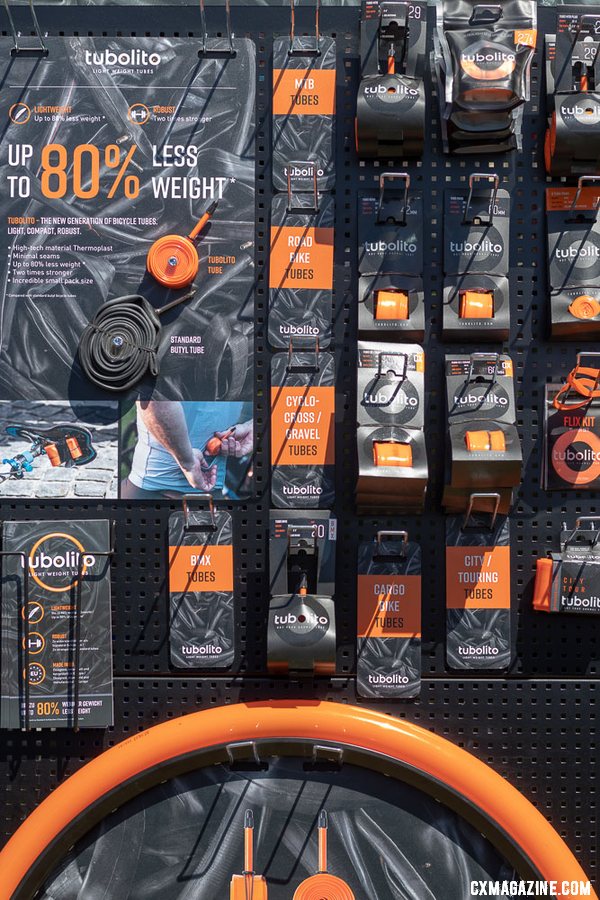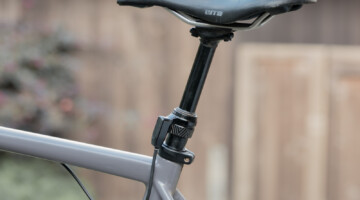Tubolito TPU Inner Tubes
Tubolito inner tubes were one of the more compelling new products we saw at Sea Otter. They’re not butyl or latex tubes but instead made from TPU (thermoplastic polyurethane).

The Tubolito tubes are made from TPU plastic, its lightest versions pack very small for emergency use when your tubeless setup fails. 2019 Sea Otter Classic. © A. Yee / Cyclocross Magazine
The company boasts several advantages over standard tubes, including major weight savings, much smaller pack size and better puncture and pinch resistance.
For racers already converted to tubeless, the company has an ultralight, ultra-small S-Tubo mountain bike tube that weighs just 45g and is a fraction of the size of a normal butyl tube, helping you keep your saddle bag or jersey pocket from being stuffed or weighted down.
Compared to latex, the Tubo tubes can still save weight and offer better air retention.
The tubes start around $20, with the gravel/cyclocross size retailing for $35. The 700c gravel tubes handle 30-40mm tires. Any bigger than that and you’d want a 29er tube.

The Tubolito tubes start at $25, pack small, can weigh 80% less than butyl, and are said to offer more puncture and pinch protection. They come in many sizes, including cyclocross and gravel good for 30mm to 40mm wide tires. 2019 Sea Otter Classic. © A. Yee / Cyclocross Magazine
If you haven’t jumped to tubeless but are looking for fewer flats, the Tubo tubes, if they do everything they claim to do, could be an easy upgrade, especially if your wheels and tires aren’t tubeless compatible.
Thirty-five dollars sounds like a lot to spend on inner tubes, but perhaps in dollars per gram savings, it’s a bargain compared to a wheel upgrade.
REI currently stocks the mountain bike tubes, but the company sells direct as well.

Tubolito tubes can be viewed as a really expensive inner tube, or a really cheap way to shed rotating weight and suffer fewer flats. 2019 Sea Otter Classic. © A. Yee / Cyclocross Magazine
Stay tuned for a test.
More info: tubolito.com































